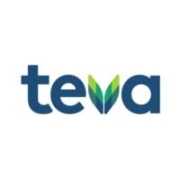What is our primary use case?
I used SnapLogic for ETL purposes, particularly for automating manual activities, for example, automating validation reports, checking and generating email, etc.
How has it helped my organization?
The business problems solved by SnapLogic involved setting manual work or manual validation that my company runs in the backend database which is connected using Snaps, then the validation is put as a query into these Snaps, which SnapLogic validates. The solution will generate the results, then sends a report to your email ID, so activities that used to be manual are now automated.
My company also used SnapLogic for ETL processing, particularly various inputs, CSV files connected with Redshift, including databases and adjacent files inputs. The solution can do file-level processing, take data from one data source, and put it into the other data source, so small ETL projects.
You can also take advantage of the SnapLogic pipelines. When a pipeline is created, you can get the URLs from that pipeline which can be triggered from AWS Lambda or any other triggering service. A vendor will provide a set of files that need to be processed. It's not a huge file as it's like transactional data that a vendor provides every week, so my company creates a pipeline where the team configures data in Lambda, so whenever a client drops that particular file for processing, the URL gets triggered, and the SnapLogic job will also be triggered. The SnapLogic job will pick the file from AWS from three locations or any source, then it does the transformation and loads it into the Redshift database of my company, and then the data will be used for several downstream and reporting purposes.
ETL is the major purpose for SnapLogic in the company where it does the transformation by fishing data from one source and putting it into the other. Automation is another purpose.
What is most valuable?
I found SnapLogic valuable and what I found most valuable about it was its ETL feature. I also found its automation feature valuable. It can be used for automating manual activities. It can be used as a middleware for certain transactional data processing and minimal datasets and ETL activities.
What needs improvement?
What could be improved in SnapLogic is that it was not capable in terms of processing a large number of datasets, but at that point, SnapLogic was evolving. It didn't give a lot of Snaps. I heard recently there are a lot of Snaps getting added and the solution was being enhanced, particularly to connect different data sources. When I was working with SnapLogic six months to one year back, I faced the issue of it not being capable of handling a huge volume of datasets or didn't have much of Snaps, and that was the drawback.
If there is any large number of data sets, that's based on or depends on your configuration. If it is a huge volume of data, other traditional ETL tools such as Informatica and Talend can process millions and billions of records, while in SnapLogic, the Snaplex fails or it returns an error in terms of processing that huge volume of data. Informatica, Talend, or any other ETL tool can run for hours in terms of jobs, while SnapLogic jobs fail when the threshold is reached. SnapLogic isn't able to withstand processing, but I don't know if that's still an issue at present, because the solution is getting enhanced and it's been more than six months to one year since I last worked with SnapLogic.
There are now a lot of Snaps getting added to the solution, and if it can overcome the limitations I mentioned, SnapLogic could be the go-to tool because currently, it's not being used as much in organizations. It's being used comparatively less compared to other retail tools.
For how long have I used the solution?
I've worked with SnapLogic for over a year, but it's been a few months since I last worked with the product because I've switched companies.
What do I think about the stability of the solution?
SnapLogic is a stable solution, particularly for scheduled activities. You can schedule activities based on timing or triggers and the solution functions well. SnapLogic, in terms of performance, was good for minimal datasets or transactional datasets. It runs in a few seconds and depending on the volume of data, a job runs for hours, but when there's a huge volume of data, the job sometimes fails.
What do I think about the scalability of the solution?
The cloud version of SnapLogic is scalable, but I haven't personally tried scaling it.
How are customer service and support?
I have never reached out to the technical support for SnapLogic because I only reached out to the administration team of my company who reach out to the SnapLogic support team.
How was the initial setup?
The setup and administration for SnapLogic were taken care of by a different team, but in terms of development work where the solution was involved, we can prepare pipelines and from a lower environment those can be moved to other environments, so deployment-wise, it was quite easy particularly when we can export the pipeline into an XML file and upload it into the other environments. That portion was easy and won't take up much time. Deployment activities for SnapLogic are quite easy and doable and won't take much time depending on the number of pipelines in the project folder.
What's my experience with pricing, setup cost, and licensing?
I'm not aware of the pricing for SnapLogic because I'm just an application developer.
Which other solutions did I evaluate?
I evaluated Informatica and Talend.
What other advice do I have?
I'm not sure which cloud provider was used by my company for SnapLogic, as that was maintained by a different team. I'm just an application user.
SnapLogic requires maintenance, but the administration work or maintenance work was done by a separate team, so I'm not quite clear in terms of maintenance. There are releases I'm aware of, where I would get a notification that the product would be offline for some time because the team will be doing certain enhancements. The administration and maintenance team is given information on the new releases for this version, so my team, particularly the application development team, would test it and make appropriate changes if required. Sometimes there's a scene where one snap was getting removed and you need to replace it with a different snap, particularly a newer release or version. SnapLogic has regular maintenance, release, or version handled by a different team within my company.
There are approximately thirty to fifty users of SnapLogic within the company. There's a team dedicated to administration activities in terms of deployment, maintenance, release activities, and providing access. There's a team of application developers which I'm part of that uses the tool to create pipelines, work on SnapLogic to develop apps, and do ETL transmission.
I didn't work with the solution daily. I only worked with it whenever required.
SnapLogic is used comparatively less by multiple organizations. I would opt for other traditional tools that have a lot of other features, which have a built-in cache for faster performance and can process huge ETL load volumes, such as Informatica, Talend, including PySpark. I would rate SnapLogic less.
My advice to people looking into implementing SnapLogic is that if you have basic ETL knowledge, you can do self-study on this. There is also documentation for every snap, so even if you don't know how to build pipelines or how to work on this tool, the documentation would be really helpful. There's a help button in the tool that when clicked, directly takes you to that particular snap's documentation. You can self-study and you can create it yourself. External training is not required, and that is one pro about SnapLogic. The UI portion is also good. There is a separate window for pipeline creation and you can go to the Snaps and folder areas separately.
I'm rating SnapLogic eight out of ten.
My company is a customer of SnapLogic. It is an AWS partner, but not a SnapLogic partner.
Which deployment model are you using for this solution?
Public Cloud
Disclosure: My company does not have a business relationship with this vendor other than being a customer.


















